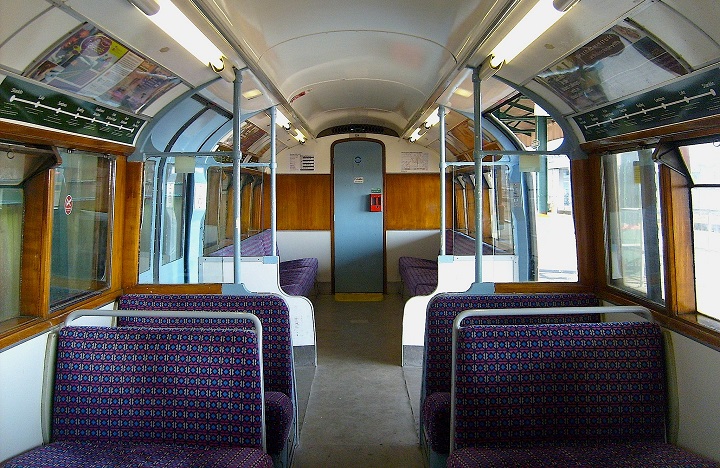The Class 483 "'38 Stock" ran on our Island Line services between Ryde Pier Head and Shanklin. Originally in service with London Underground, they arrived in National Rail service in 1989, replacing the Class 485 "Standard Stock" trains. These trains have two carriages.

How many cycles did a Class 483 carry?
There is no dedicated space for cycles on these trains, but they can be stored in the area adjacent to the train doors provided people are able to join and leave the train freely. They can't carry tandem bicycles or trailers. Find out more about our cycle policy.
How many wheelchair users could travel on a Class 483?
There is no dedicated area for wheelchair users on these trains. Wheelchair users can travel safely in the area adjacent to the train doors, provided that your wheelchair brakes are kept on until you're ready to leave the train.
What accessible features did the Class 483 have?
The Class 483 trains had:
For physically disabled people:
- Power-operated external doors. They're at a height where they can be opened by a wheelchair user on the platform easily.
- Large external door operation buttons, with what the button does clearly marked in English and Braille. They contrast with the door and light up when active. On the inside of the doors the buttons are metal, with embossed print in English. They light up when the door buttons are activated. Blind or partially-sighted people may find them difficult to use.
- The train can sway regularly from side to side when travelling over some sections of track. You may find it difficult to stand or sit in the seats that run along the walls of the train ("longitudinal seats") in these areas.
- Assistance joining and leaving the train is available from the crew.
For D/deaf, hard-of-hearing, and sound-sensitive people
- The crew carry smartphones, which can be used for alternative forms of communication if needed.
- Sharp corners on the track mean that sometimes the wheels of the train can generate screeching noises. This could be uncomfortable for sound-sensitive travellers.
For blind, partially-sighted people, and photosensitive people
- Assistance animals were welcome on board.
- Large external door operation buttons, with what the button does clearly marked in English and Braille. They contrast with the door and light up when active. On the inside of the doors the buttons are metal, with debossed print in English. They lit up when the door buttons are activated. They may be difficult to see for blind or partially-sighted people.
- Unfortunately the nature of how our trains are powered means that we can't guarantee lighting will be flicker-free. Warm fluorescent lighting was used throughout, without light diffusers.
For Autistic, anxious and Neurodiverse people
- Assistance animals are welcome on board.
- We welcome anxious or nervous travellers to try the train with us before making a journey. Our ambassador team will happily support individuals or groups at a station, navigating buying tickets, boarding trains, travelling, and seeking help if you need it.
- Our crew carry smartphones, which you can use for alternative forms of communication if needed.
For people with severe allergies or who are immunocompromised
- The train is cooled with natural ventilation.
- You're welcome to use a safety/particulate mask on board if you need to.
Header image: Ian Capper, CC BY-SA 2.0, Link
Interior image: Peter Skuce - Own work, Public Domain, Link




